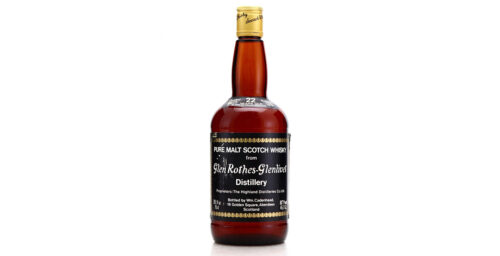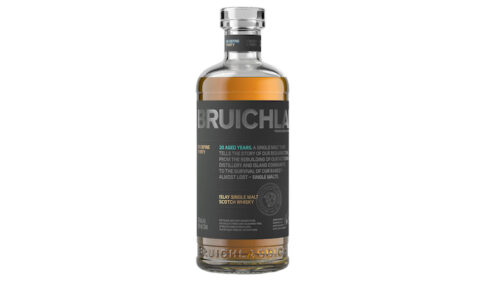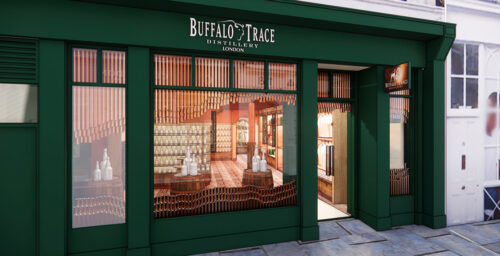Located in a beautifully restored 96-year-old crane factory in Seattle, Washington’s SoDo neighborhood, Westland Distillery is making some of the finest American craft single malt whiskey in the country. Matthew Hofmann, master distiller at the ripe old age of 25, was kind enough to give me a tour of the 14,000 square foot space recently along with Tyson, one of the distillery dogs. The 20-employee distillery is casual yet refined, much like their spirits. “Whiskey making is an art,” said Hofmann, “but it’s also an industrial process.” It was clear he drew inspiration from this building and the neighborhood.
I learned that when the distillery was started back in 2010 in a small 2,400 sq. ft. South Park warehouse by a couple of high school friends, output for it was only around five barrels per week. Now, production is five to six barrels per day. Many are aged in their SoDo distillery, but most are aged out in the town of Hoquiam on Washington’s coast. This conscience decision was done to embrace the perfect climate conditions present there that help to prevent any overheating (and therefore over-oaking) of the spirits while they are in barrel.

As I sat down to taste Westland’s four current offerings, I learned the distillery prides itself on its core range of American whiskeys. The distillers are emphatic about creating a quality product and at this time have no plans of distilling other whiskeys. “We basically identify as single malt whiskey producers, that’s really our focus,” said Hofmann when I asked about what set his distillery apart from the others, “and other distilleries aren’t necessarily as focused on malt whiskey.” It’s important to mention that Westland uses Belgian brewer’s yeast during fermentation to enhance flavors. All of the whiskeys are 92-proof and are never chill-filtered.
Their flagship whiskey, the Westland American Single Malt, was introduced in late 2013 as the “truest expression” of the brand. An impressive grain bill of five different roasted and kilned barley malts give this spirit its signature taste, the base of which is always a locally-grown pale malt with a supporting case of Munich malt, extra special malt, pale chocolate malt and brown malt. The flavor is complex yet mild, reminding me of European chocolate, with hints of local Rainier cherries and a slight note of pine. The whiskey has an inoffensive creaminess on the tongue and finishes smooth.
The Sherry Wood single malt, aged ten years in Spanish Oloroso sherry casks from the Pedro Ximénez family, is decadent. The cinnamon and cardamom spices that the whiskey adopts from the repurposed casks amplify rich, fruity notes. This varietal is evidence of the unpretentious maturity Hofmann and his team delivers in each bottle they produce.
Westland also offers the Peated Single Malt. Hofmann left behind his economics major at the University of Washington early but ended up getting a technical education in distillation process in Scotland at Heriot-Watt University. This whiskey tastes like an homage to his time there; though not “super peated,” it tips its hat to traditional Scotch without the harshness of the “rubber-band, medicinal” flavors that deter most from the spirit. That was the goal, according to Hofmann – to create this spirit for people who otherwise refused to try peated spirits.

Cask 395, meanwhile, is a whiskey that’s a mixture of peated new oak spirit and the final new oak spirit, which are then combined in a cask together. As unusual as it sounds, it oddly works. Beautifully floral, this hand-filled spirit inspired by Scottish style is designed to “do what you will with it,” said Hofmann. Only bottled in 375ml bottles, drinking this cask spirit is about as intimate an experience as you can get in a tasting room, which happens to be the only place you can pick up a bottle.
Hofmann said he’s a big believer in adding water; but ice, not so much. Especially for the cask strength spirits, a couple drops of water help open up the dimensions of flavor. I also asked him how he felt about the use of his whiskey in craft cocktails, and Hofmann said that he is not a purist, but welcomes the use of Westland spirits in those.
Finally, I was fortunate enough to get a peak inside the quality assurance lab at Westland. Hofmann traveled back to Scotland in September to meet with other master distillers who all said the same thing: you have to come up with your own system. This lab is where he tracks the progress of his system as it organically evolves: a chemistry lab for whiskey nerds.

Except, there’s no chemicals…just whiskey, bottles upon bottles of whiskey. I’d never seen anything like it in all of my distillery tours. I got to sample different cask varietals and experiments that defied my logic of how whiskey was supposed to taste and how it was supposed to be drank – everything from a cask strength light enough to drink on a hot summer day to an ultra-regional whiskey aged in Oregon oak barrels (an aging method unused until Westland tried it).
You can find Westland’s spirits in all 50 states by the end of this year (they’re already in about half of them). All of the whiskeys are beautifully bottled with a signature diamond label overlaying a topographical map of the Puget Sound area.
Westland’s aspirations of being the best of the American single malt distillers in the world is ambitious if nothing else, but given their rapid ascent to success from modest beginnings in their South Park warehouse, that goal might not be so far out of reach in the future.








